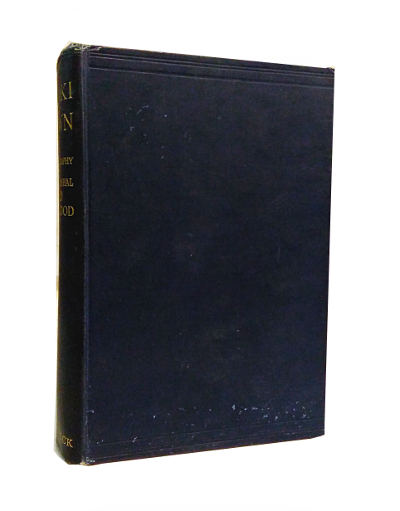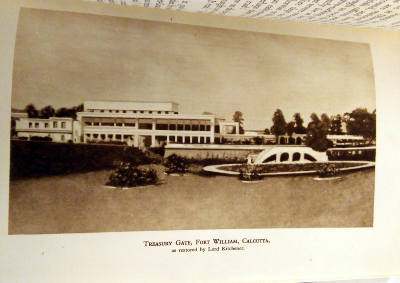With 4 foldout colour maps of India and Burma, South Africa, North-West India, and Gallipolli, and one other map of Northern France and Belgium.
About filed-Marshall WIlliam Birdwood (from Wikipedia):
Field Marshal William Riddell Birdwood, 1st Baron Birdwood, GCB, GCSI, GCMG, GCVO, CIE, DSO (13 September 1865 – 17 May 1951) was a British Army officer. He saw active service in the Second Boer War on the staff of Lord Kitchener. He saw action again in the First World War as Commander of the Australian and New Zealand Army Corps during the Gallipoli Campaign in 1915, leading the landings on the peninsula and then the evacuation later in the year, before becoming commander-in-chief of the Fifth Army on the Western Front during the closing stages of the war. He went on to be general officer commanding the Northern Army in India in 1920 and Commander-in-Chief, India, in 1925.
William Riddell Birdwood was born on 13 September 1865 in Kirkee, India. His father, Herbert Mills Birdwood, born in Bombay and educated in the UK, had returned to India in 1859 after passing the Indian Civil Service examination. In 1861, Herbert Birdwood married Edith Marion Sidonie, the eldest daughter of Surgeon-Major Elijah George Halhed Impey of the Bombay Horse Artillery and postmaster-general of the Bombay Presidency.
After securing a militia commission in the 4th Battalion Royal Scots Fusiliers in 1883, Birdwood trained at the Royal Military College, Sandhurst, from which he was commissioned early, owing to the Russian war scare of 1885, becoming a lieutenant in the 12th (Prince of Wales’s) Royal Lancers on 9 May 1885. He joined his regiment in India and then transferred from the 12th Royal Lancers to the Bengal Staff Corps on 20 December 1886. He subsequently transferred to the 11th Bengal Lancers in 1887, seeing action on the North-West Frontier in 1891. He later became adjutant of the Viceroy’s Bodyguard in 1893. He was promoted to captain on 9 May 1896 and saw action during the Tirah Campaign in 1897.
Birdwood served in the Second Boer War, initially as brigade-major with a mounted brigade in Natal from 10 January 1900 and then as Deputy-Assistant Adjutant-General on the staff of Lord Kitchener from 15 October 1900. Promoted to brevet major on 20 November 1901 and local lieutenant-colonel in October 1901, he became military secretary to Lord Kitchener on 5 June 1902, and followed him on his return to the United Kingdom on board the SS Orotava, which arrived in Southampton on 12 July 1902. He received a brevet promotion to lieutenant-colonel in the South African Honours list published on 26 June 1902.
When Kitchener went to India as commander-in-chief in November 1902, Birdwood joined him there as assistant military secretary and interpreter. He was promoted to the substantive rank of major on 9 May 1903 and appointed Military Secretary to Lord Kitchener with the rank of full colonel on 26 June 1905. Having been appointed an aide-de-camp to the King on 14 February 1906, he was given command of the Kohat Brigade on the North West Frontier in 1908 and promoted to temporary brigadier-general on 28 June 1909.
Promoted to the rank of major-general on 3 October 1911, Birdwood became quartermaster-general in India and a member of the Viceroy’s Legislative Council in 1912 and then Secretary of the Indian Army Department in 1913.
More at Wikipedia.





